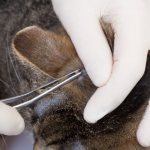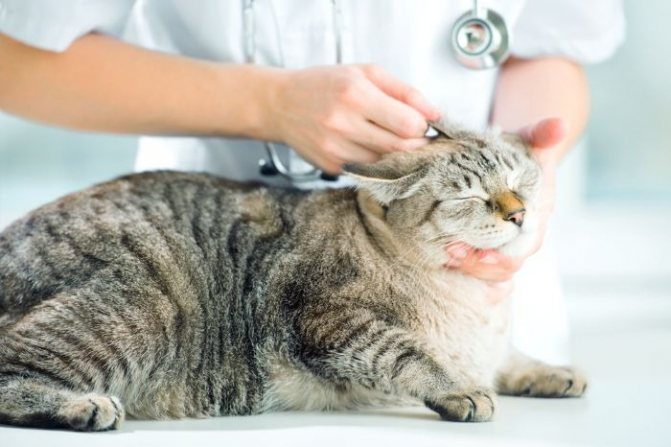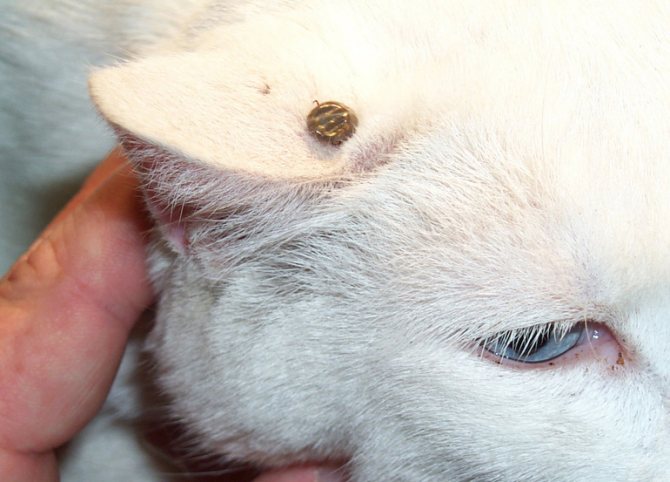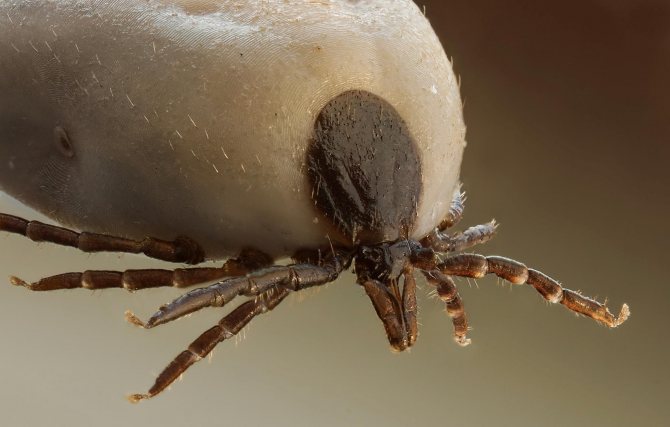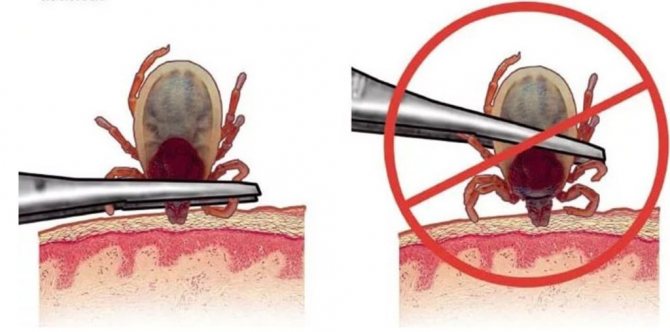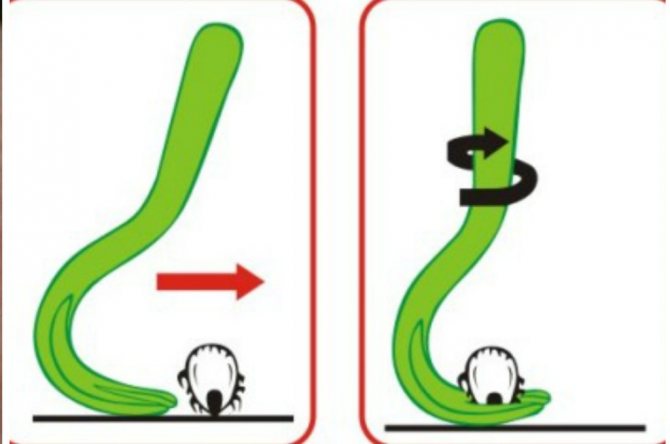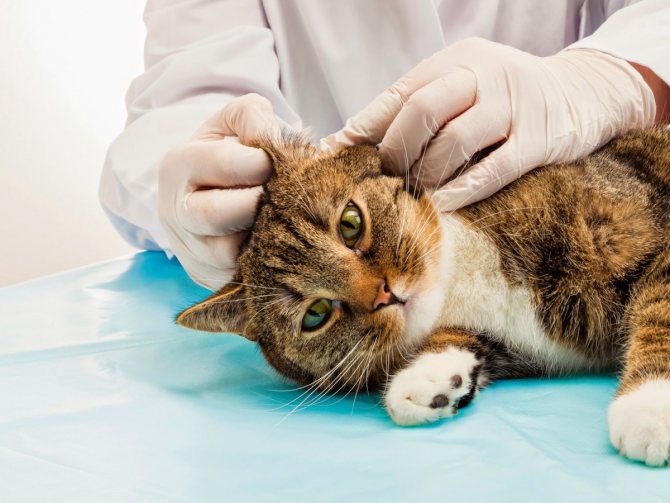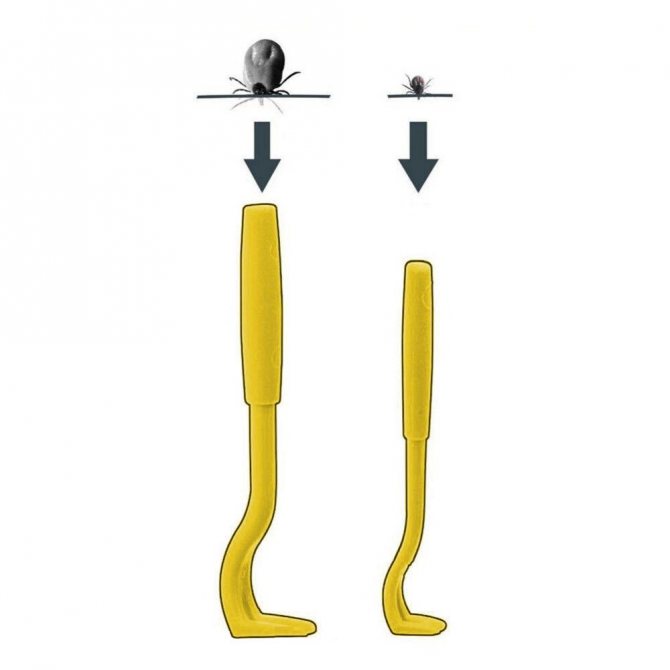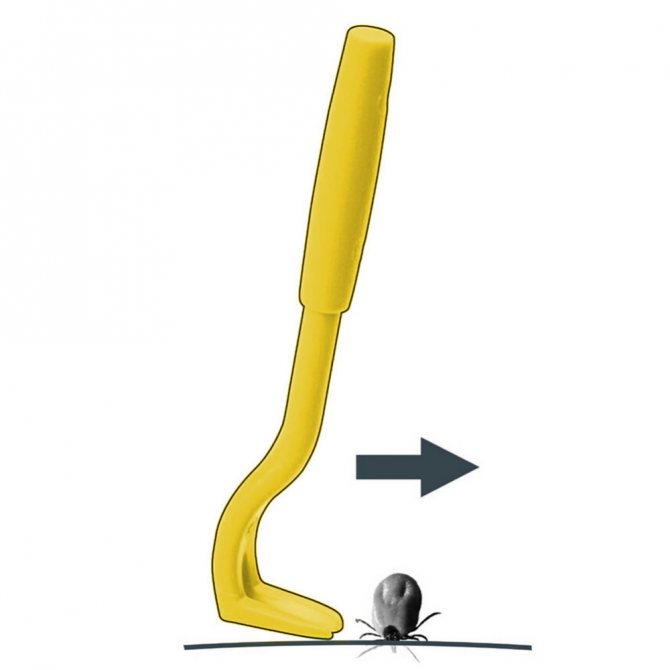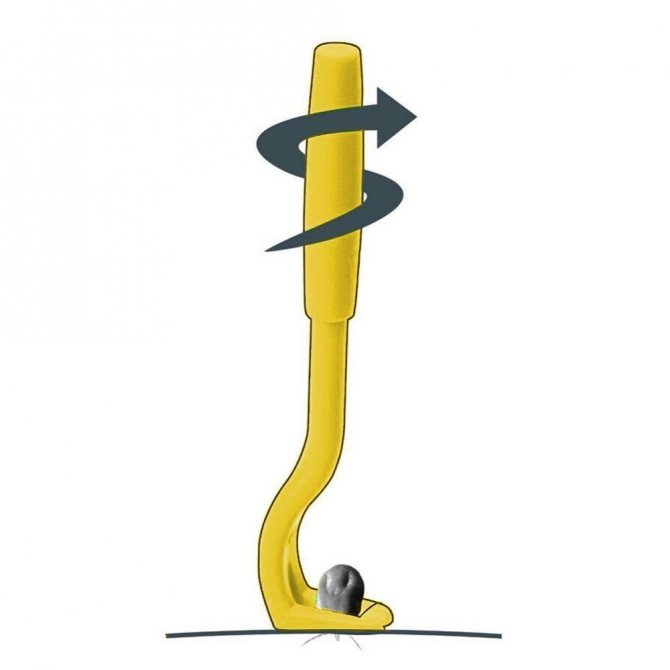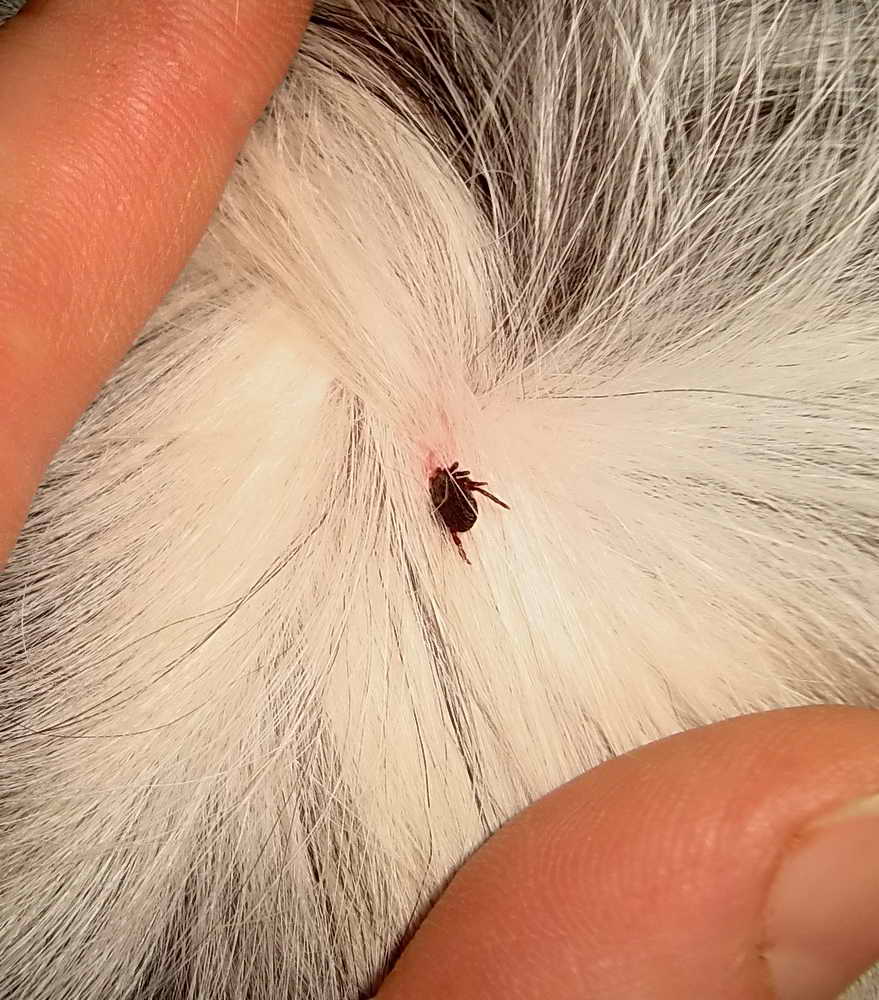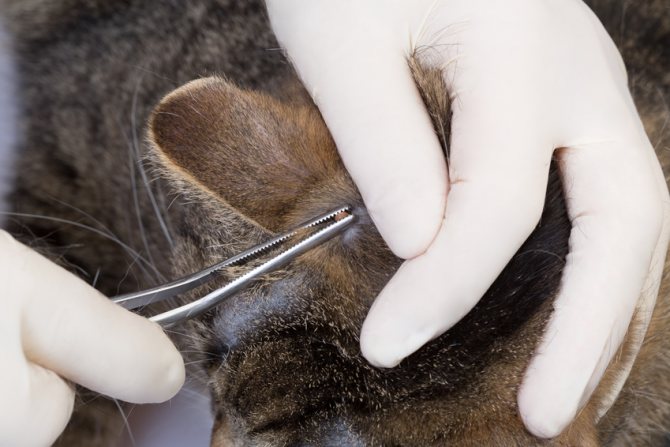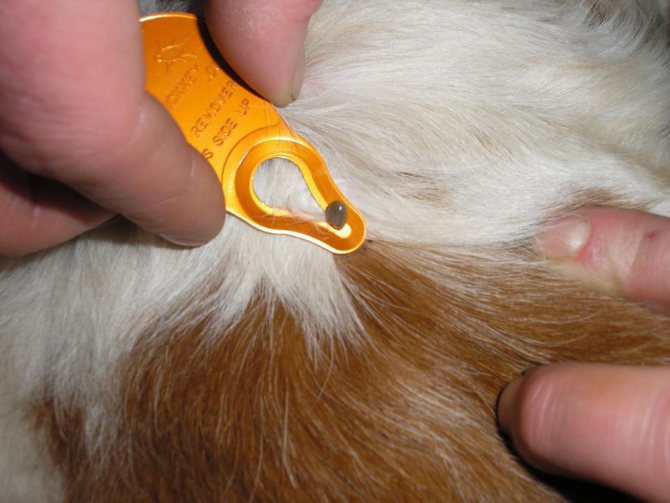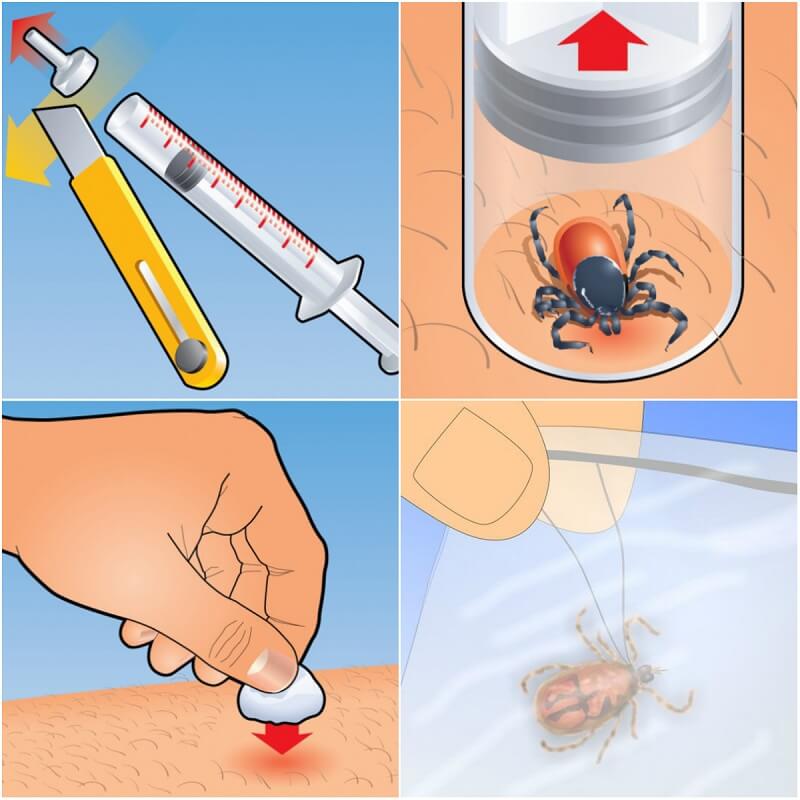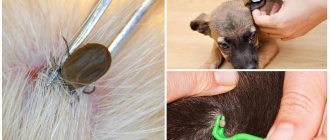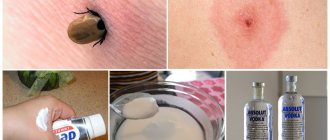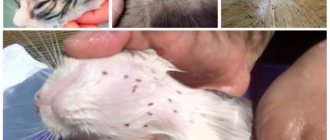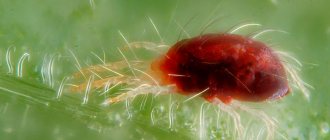What to do if a cat is bitten by a tick. How to remove a tick. Parasite withdrawal rules. Recommendations for self-removal of the parasite at home. What to do if the tick's head remains in the wound. Danger to the animal. Security measures. Preventive actions.
Our pets are often attacked by blood-sucking parasites, which cause them great trouble. Going out for a normal walk, the cat can be bitten by a tick, which is very dangerous for both humans and animals. If such a situation occurs, urgent action is required.
Next, we will consider in detail how to remove a tick from a cat, what mistakes should not be made, how to protect the animal and the necessary preventive actions.
Tick detection
In order to detect this parasite, you need to know what it looks like so as not to be confused with other types of insects. So, the tick has a body in the form of a drop, they can be black or brown. If a young individual has only 6 legs, an adult has 8 of them. Conditionally blood-sucking ones are divided into abdomen, head and limbs. The mouth apparatus with a proboscis is located on the head. When bitten, the parasite cuts the skin and penetrates the skin with its proboscis. As it gets saturated, it deepens more and more under the skin.
If a tick has just hit the skin, it is more difficult to notice and distinguish it from other parasites than in a well-fed state. The fact is that it has a very small size, but when the tick sucks, then as it becomes saturated, it significantly increases in size.
So it is very easy to find it, it resembles a large pea or a large mole. In this state, only the abdomen is on top of the skin, the head is under the skin. Also, satisfying its hunger, it also changes color; on the body of the animal you can find a "pea" of gray, red or pink color. How they look can be seen in the photo.
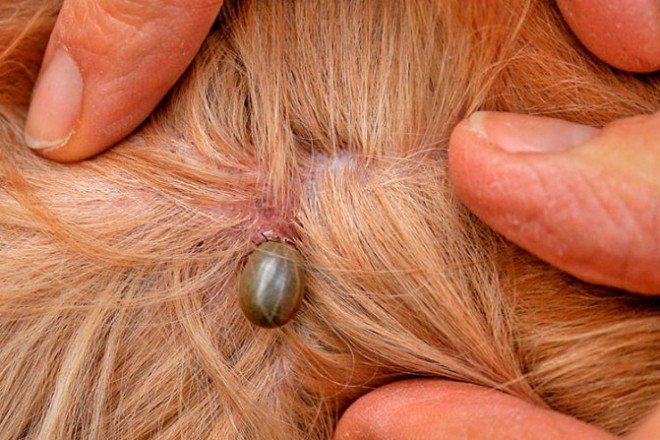
To make it easier to examine the animal, a comb is used, which has rare teeth. When combing, it is easy enough to identify a blood-sucking insect, but you will also need to feel the cat with your hands. Most often, parasites stick to areas where the thinnest and most delicate skin is and in these places it is very difficult to comb the fur with a comb. These areas include the neck, behind the ear, muzzle, areas under the legs, belly and groin. There are cases when the owners mistook the nipple for a parasite. Remember that both cats and cats have nipples, there are 8 of them.
When such an unpleasant find is found in a cat, action should be taken immediately. The correct and safe decision is to visit a veterinary clinic, where they will carry out the procedure and give all the necessary recommendations for further actions. But, unfortunately, it is not always possible for the owners of cats to contact a veterinarian, in such cases it is necessary to carry out the removal procedure on their own.
Carrying out the procedure at home should be performed according to the rules and recommendations. If we talk about the technique of removing the parasite in cats, then it is no different from that used for humans. The main thing is not to rush, not to worry, follow the recommendations and not make mistakes.
Description of the parasite
Outwardly, the tick is somewhat similar to a spider.It has 8 legs, an oval body and a small head, which, when bitten, is completely immersed in the victim's skin. The tick is flat, swells when feeding, filling with blood. Females are larger than males. Parasites eat very rarely, but due to their large number, the risk of being infected by ticks is high. Only females cling to the victim.
The peak of bloodsucking activity occurs in the last 2 weeks of May and early September. However, this does not mean that a cat cannot suffer from a tick during other periods of warm weather. Pets are mainly affected by forest and taiga ticks. In the Middle Lane, the second type of parasite predominates, and in the South, the first.
The oral apparatus is of interest. The tick proboscis is equipped with sharp teeth that are directed backward, which facilitates the process of piercing the skin and fixing it on the victim (host).
The saliva of the parasite contains pain relievers. They are injected immediately after the skin is punctured. In addition, saliva also has a fixing effect; being around the proboscis, it additionally fixes the bloodsucker like cement. The tick can remain on the host from 3 days to 1 month. The later it is discovered, the more difficult it is to remove it.
Withdrawal procedure
When a tick is found in an animal, remember that you cannot jerk it and try to simply unhook it, such actions can lead to complications.
There are rules that must be followed when carrying out the procedure at home:
- It is imperative to wear rubber gloves, as the insect can be infected, which is dangerous for the person himself.
- When removing the parasite, the animal should be calm, not twitch and not try to escape. So calm the cat down, give it a treat, and lay it down more comfortably. In this case, someone's help will not be superfluous.
- It is impossible to make sudden movements when removing, pull strongly and crush the insect.
- When removing, the method of twisting the parasite is used, which is the safest way.
- Before the procedure, it is imperative to disinfect the hands, the bite site and the instrument that will be used for removal.
Extraction methods
For safe extraction, tweezers or a thread are most often used. Some people take out the parasite with their hands, but this method is not recommended by doctors. In this case, you need to understand how the parasite eats and how it is retained on the body of its victim. As stated earlier, it cuts through the skin and penetrates under the skin. There it is sucked by the proboscis, on which there are microscopic notches, thanks to which it is held. Together with the proboscis, the head of the tick also penetrates.
If you pull on the abdomen, this will lead to the rupture of the insect, it will not work to get it. The head and proboscis will remain in the wound, which will also need to be removed, and in some cases, surgical assistance may be required.
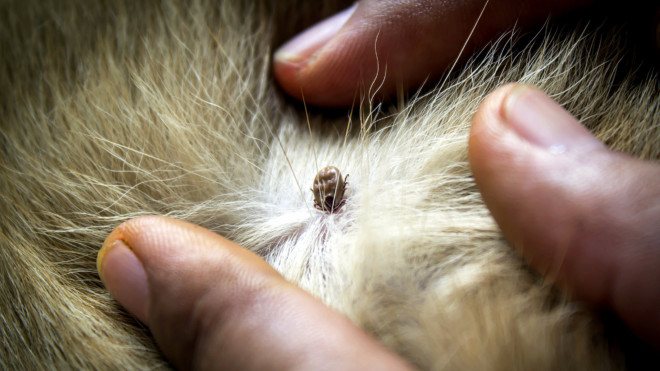

For the procedure to be safe, you need to understand how to hold the insect during removal. To do this, if tweezers are used, it is necessary to grab it as close to the skin as possible in order to be able to capture not only the body, but also the head.
Next, we carry out the following actions, it is necessary to scroll the parasite, which will allow it to be detached in the middle of the wound. When scrolling, it is necessary to lightly pull it up. As soon as it unhooks in the middle of the wound, it immediately slips out of it.
As soon as it is removed, the tick must be destroyed, and the wound must be examined to see if there are any fragments of the insect. Next, disinfect, you can use brilliant green, iodine, alcohol.
Things not to do
Do not believe the advice of "knowledgeable people" that the sucked parasite can be easily removed with vegetable oil or alcohol. This absolutely useless procedure will only aggravate the situation, because the disturbed bloodsucker will begin to inject poisonous enzymes under the cat's skin, this can contribute to the infection of the animal if the tick is a carrier of any disease.... And also, when removing a tick, you should not do the following:
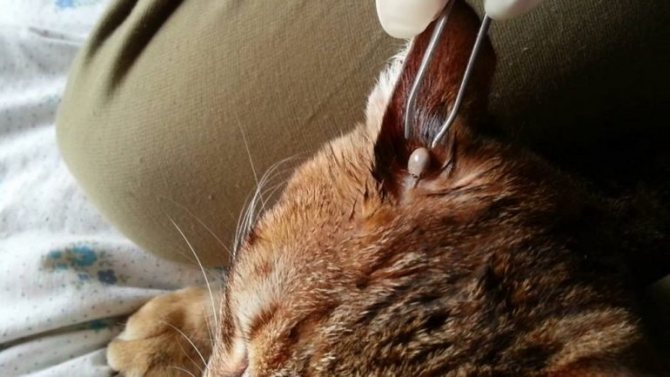

- try to crush an arachnid on a cat's skin;
- pick out with a needle;
- pull out sharply with your hand;
- try to burn with a cigarette;
- make lotions from gasoline or ammonia.
It is better to go to the veterinary clinic, where a specialist will carry out all the necessary procedures.
Syringe
A syringe is used very rarely. The fact is that it will be ineffective when the blood-sucking sucker has sucked very strongly, the created vacuum will not be able to extract it. Also, the syringe is rarely used, due to the wool, which does not allow creating the same vacuum. If you decide to try this method, you will need to cut the hair at the bite site.
You need to take a syringe and cut it off the side of the needle. This should be done as carefully as possible in order to get the most even edges. Next, lean the syringe against the skin at the site of the bite and pull the plunger several times, thus creating a vacuum, which pushes the bloodsucker out of the wound. After the procedure, do not forget to treat the wound.
What mistakes you can't do
Due to the possible infection, all procedures that involve contact with an insect must be carried out only with gloves. If they are not there, you can wrap your fingers with a bandage or any cloth.
Everyone is familiar with the method when an insect is watered with oil, kerosene or other oily liquid. It is believed that the oily liquid will block air access, the tick will suffocate and can be easily reached. This method is very dangerous for the animal and cannot be used.


The fact is that the parasite can indeed suffocate and die, but you need to be aware of the possible complications. When he does not have enough air, he will go deeper into the wound even more. In addition, in a stressful situation, he will release a large amount of saliva, which contains the infection. Therefore, in this case, we, on the contrary, expose the cat to greater danger.
Do not make sudden movements, do not pull, do not jerk the insect. If you pull it out, then fragments will remain in the wound. This is quite dangerous, because if they are not removed, then inflammation, decay will bend, which leads to serious consequences.
You cannot crush them, because the liquid that is in their digestive system, just like saliva, contains an infection. Contact with human or animal skin can lead to infection.
Bite site
Finding a tick is not easy. If a person has a rash, redness on the skin, then this is not visible in the animal behind the fur. Therefore, check your cat for ticks after every walk. This is especially true for those who live close to fields or forests - the main habitats of parasites. But even if you live in an urban area, you should not relax. There is a chance to pick up the parasite in urban settings.
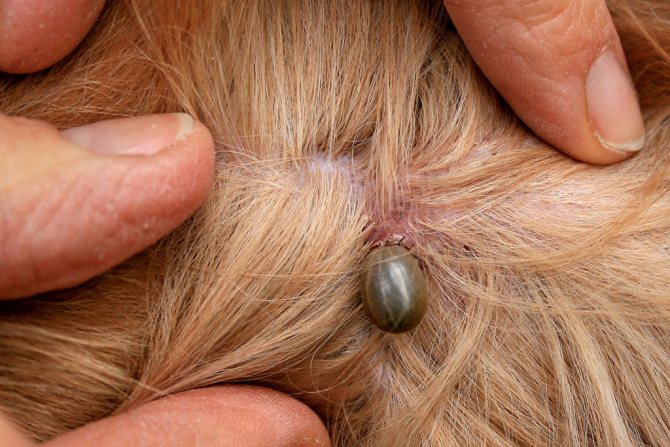

Today, the species diversity of ticks reaches 50 thousand. Not all of them are dangerous. Someone generally believes that they bring harm only to humans. But in fact, the bite of an infected tick is fatal in animals. Even if the tick is not a disease carrier, it will cause a lot of inconvenience to the animal.
The cat will try to pull it out, which will lead to irritation and the tick will dig even deeper. Therefore, you need to get it immediately upon detection.
One of the most common misconceptions: grease the tick with oil. There are also options with wax or kerosene. So: you can’t handle the bite site categorically! Thus, you deprive the parasite of access to oxygen. Yes, it will fall off, but while this happens, the tick will release even more poisonous saliva from stress, which will lead to more poison entering the cat's body. And if he is a carrier, then the count goes to hours. Therefore, it is possible to process the bite site only after the tick is completely removed.
When removing it yourself, you cannot crush the tick. So the poison will still reach its goal. Do not try to pick it open with something sharp, pull it out in parts. All of this will cause enormous harm to your animal.
When a tick's head remains in the wound
If it was not possible to remove the bloodsucker from the skin correctly, then his head will remain in the wound.It is very easy to see this as a black dot will be visible. You can remove fragments from the wound using a needle, which must be disinfected. In this case, you need to use the technique, as in the case of a splinter, just pick it up with a needle.
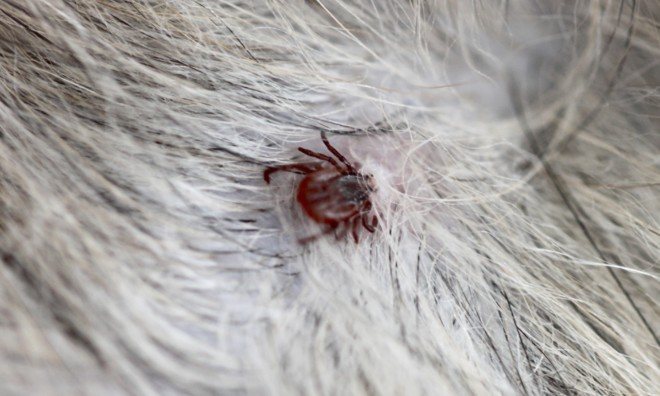

But it should be borne in mind that in some cases, the head remains very deep in the wound, and if the bite area also swells, then the removal procedure is very difficult to carry out. Remember that in such situations it is necessary to go to the veterinary clinic. You cannot expand the wound yourself and penetrate deeply with a needle, as you will hurt the animal and complicate the situation.
Danger to the animal
Everyone knows the danger these parasites pose. When an infected tick strikes, it transmits the virus to its victim. The diseases they transmit are very dangerous for the animal and can lead to death without proper treatment. If you took it out and want to find out if it is infected, you need to put the bloodsucker in a hermetically sealed container and take it for tests for 2 days.


In an animal, symptoms do not appear immediately, you should monitor your health for a month. Symptoms appear depending on the disease, and quite severe allergic reactions can also occur.
The infected animal becomes weak, appetite decreases, and as a result, weight decreases, drowsiness, mucous membranes become pale, the temperature rises, the color of urine changes. For any symptoms, you should immediately contact your veterinarian.
The most common diseases include theileriosis, tularemia, and hemobartonellosis. Each of them is treatable, but it is very important to diagnose them early.
Preventive actions
It is much easier to prevent the attack of ticks, to protect the animal, than to treat the consequences later. Now there is a very large assortment of protective equipment that prevent infection with parasites. Depending on how often the cat walks outside, you can get the most effective remedy. They are presented in the form of drops, sprays, collars.
If you buy drops, the cat will be completely protected within a month. But such drugs must be carefully selected, it is necessary to take into account the weight of the cat, age, state of health, concomitant diseases. It will be correct to contact your veterinarian, who, after examination, will recommend a safe and effective remedy.
Regarding sprays, they have a short-term effect. They are applied before a walk and act for several hours. The collar also belongs to such protection during walks.
But remember that no matter which remedy you choose, regular examinations of your furry friends are required. After the walk, take a few minutes to examine, feel the skin on the neck, ears, paws, muzzle. Monitor their behavior and health, at the slightest change, seek the help of professionals, which will avoid serious consequences.
Prophylaxis
Veterinarians urge cat owners to follow these guidelines:
- In the warm season (from May to October), use special means to protect the animal that has access to the street from the attack of ticks.
- Reduce the amount of time your cat is outside.
- Try to carefully examine your pet for the presence of parasites immediately after walking in the fresh air.
Preventing a bite is much easier than spending energy, nerves and time removing ticks, and spending money on consulting a veterinarian. If the tick attacked the animal, carefully remove it, following the instructions. If you find any changes in the behavior or well-being of your pet, urgently contact a specialist. Remember: starting treatment on time can save the life of a furry pet!

